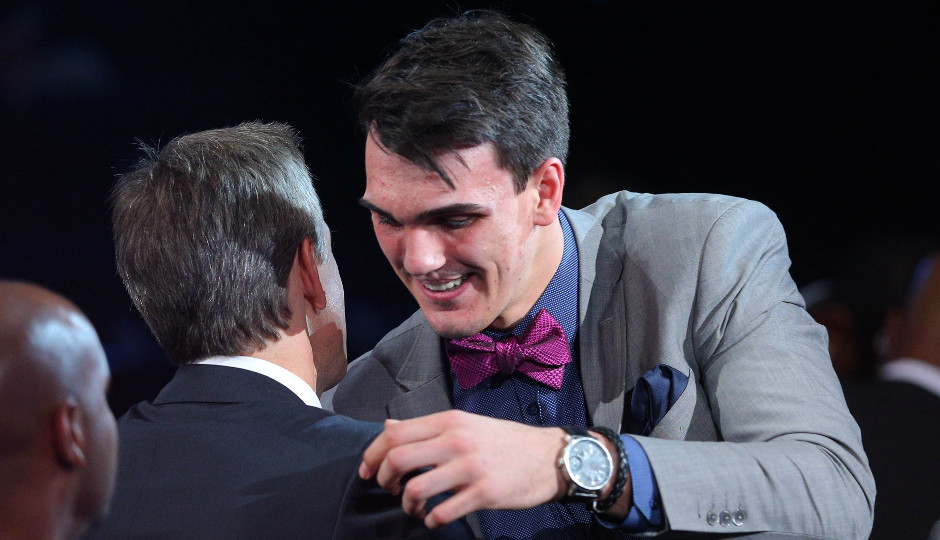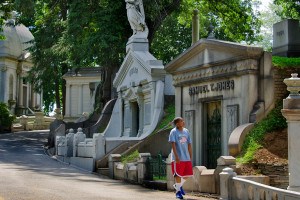Sixers Mailbag #12: Can Dario Saric Make an Immediate Impact?

What kind of impact can Dario Saric make for the Sixers next season? | Brad Penner-USA TODAY Sports
This week we continue our 76ers mailbag series, where we discuss some of the pressing topics around the team.
In the 12th edition of our Sixers mailbag we talk some more about how much of an impact Dario Saric can make next season, about Jahlil Okafor’s pick and roll defense, Oklahoma guard Buddy Hield’s standing as a draft prospect, and whether the team would be willing to draft, and stash, another Croatian big man.
You can read previous editions of the Sixers mailbag here. If you want to submit a question for a future mailbag either shoot me a message on twitter or send me an email.
Note: any opinions expressed here are my own opinions, and not reports or expectations based off of inside information, unless I explicitly state that a statement is based off of inside information.
Ish (@PeterJSmith23):
“Do you think Dario Saric is going to make an immediate impact?”
I do think, if he does in fact end up coming over (and everything out of Saric’s camp is that he will come over, even if it makes financial interest for him to stay in Turkey one more year), he will get minutes. His ability to push the ball will help ignite the Sixers’ fast break, and his creativity something this offense could really use.
Will he make an immediate impact towards winning? That’s a little tougher to say. As is frequently mentioned, the impact rookies usually have is somewhat limited. Saric is in a slightly different situation than most rookies because he just spent the past two years playing much tougher competition on a regular basis than NCAA prospects entering the draft would have, and he’s certainly more ready to contribute than he would have been had he come over immediately following the 2014 draft.
I would expect that he will get playing time, that his passing will cause you to stare at your television in awe at times, and that the improvement in his three-point shooting could make it easier to place him in an offense with the existing personnel. But beyond some of the defensive limitations that could limit his impact in the NBA in general, there’s still going to be an adjustment period that will, at least initially, limit his impact to some degree.
I would guess Saric slots into a sixth man type of role, playing ~25 minutes per game (although obviously highly dependent on how the rest of the roster shakes out), making a slightly positive impact on the Sixers’ offense and a slightly negative impact on defense, but with room to grow on both ends of the court.
Dave Van Lenten (@PhillyHeel26)
“Who is the best PF for Jahlil Okafor to play next to?”
Assuming that the Sixers are going to continue playing Okafor at center, you will want a mobile power forward who can provide top notch defensive rotations, who can alter shots at the rim from the weak side, defend the pick and roll, and who can hit from three-point range to open up space for Okafor to operate down low. You also want somebody who can contribute on the defensive glass, since Okafor’s contributions in that facet of the game are inconsistent.
On the defensive side of the court, Nerlens Noel ticks a lot of those boxes, but his defensive awareness when he’s on the perimeter and tasked with chasing big men off of screens and navigating pick and rolls isn’t quite what it is when he’s in the paint and able to watch everything unfold as the last line of defense. It’s still really early, though, and that kind of awareness could take years to develop, which puts the Sixers in a tough spot. Noel certainly has the kind of defensive tools to cover up some of Okafor’s inadequacies, even if his own defensive contributions will never be fully realized playing away from the hoop on a regular basis.
But where Noel doesn’t project to ever really fit that description is on the offensive side of the court. After shooting 28 percent on shots greater than 5′ last season (shotanalytics.com), that’s actually fallen, to 25 percent, this year. His free-throw percentage has also fallen, from just under 61 percent to just over 56 percent. Expecting him to add that to his game in a meaningful way requires a little bit of a leap of faith that I just don’t have the confidence to project.
In terms of a player who could fit this mold, the obvious answer is Serge Ibaka, an elite rim protector who has added three-point range to his jump shot over the years. I always thought a prime Kenyon Martin would have been an interesting pairing as well, especially had he come up in the current NBA environment where developing his perimeter jump shot would have been a much bigger focus during the early parts of his career. He was an incredible team defender, and had the kind of defensive versatility which could have worked well with Okafor.
Zachary Louis (@freshaber_):
“Is there any realistic way the Sixers get one of Ben Simmons/Brandon Ingram and Buddy Hield, especially if Miami keeps slipping?
Oh, certainly. Buddy Hield is a name that everybody loves right now, and for good reason: he’s averaging 25.7 points per game for one of, if not the, best teams in the country, dazzling viewers with incredible range on his jump shot while connecting on 51.7 percent of his incredible 7.9 three-point attempts per game.
You’d be hard pressed to find a guy playing against the kind of competition Oklahoma is on a nightly basis, carrying the kind of incredible offensive burden that Hield is, while maintaining a 69 percent true shooting percentage.
There are still holes in Hield’s game that make me question whether he’s a lock for a top-10 pick, though. His decision-making is poor, both in terms of some of the shots that he takes and also the turnovers he commits. He doesn’t create very much at all for his teammates, especially for somebody who receives so much attention from the opposing team, and he’s never really shown plus creativity or floor awareness. Most of his offense at the rim still comes in transition, as while he’s gotten a lot craftier around the rim, his average burst around the basket still limits him somewhat.
Perhaps most alarming is his defensive awareness, which is spotty at best, and he can get completely lost off the ball. That’s something which isn’t entirely uncommon for somebody carrying such an incredible scoring load, but it’s still concerning when you’re projecting his transition to the next level, where he’s not going to be so much of a focal point.
Everybody, myself included, is willing to overlook these faults if he continues to score as prolifically as he currently is. I need to see it for longer, though. 51.7 percent from three-point range is just unsustainable, as is the 49 percent he’s shooting on shots 24+ feet from the basket. I need to see how he adapts his game when his shot isn’t falling and teams take away what he does best. He’s going to play a smaller role in the NBA, where these rough edges are going to become more pronounced. I want to know that he can still be a consistent contributor even when his shot isn’t falling and he’s not controlling the basketball for the majority of the game.
Hield maintaining his strong play during Oklahoma’s tough start to Big 12 conference play has gotten everybody’s attention, but Oklahoma still has a number of tough games ahead of them, and let’s see how Hield responds when he inevitably starts missing shots. It’s rare that you say “I need a bigger sample size” when talking about a senior, but considering the incredible jump Hield made from his junior to senior seasons, I want to see more before proclaiming him unobtainable with the Heat’s pick, especially considering how reliant he is on scoring to make a positive impact.
Erik:
“If the 76ers wind up with the third pick in the draft and it’s known that Dragan Bender will be spending at least one year overseas, do you think the team will still take him, assuming that Simmons and Ingram are taken 1st and 2nd?”
This ties directly into the article I wrote over the weekend about the report by the New York Post that said Sixers owners wanted to stay away from Porzingis because of a fear of fan backlash.
The truth is, we just don’t know. My hunch, and it’s just a hunch, is that it may depend on what happens with the first two picks: if the Sixers own pick falls in the top 2 and they get Ben Simmons or Brandon Ingram, and Bender falls to the Lakers pick at 4 or 5, then stashing Bender becomes a much easier sell. But if the Lakers pick doesn’t convey and the Sixers pick falls out of the top 2, is ownership (and management) willing to wait a couple of years before getting a return on the 2016 draft? I’m not sure I see that happening.
Noah:
“How confident are you that Jahlil Okafor will be able to improve his defensive rotations and pick and roll defense? On that same note, what effect would having better perimeter defenders on the court with Okafor have on his defense?”
It’s been one of the most frequent topics of conversation surrounding Okafor for the past year, and always my biggest concern.
Forget the jump shot, which is coming along nicely, or the passing, which hasn’t yet translated. Forget his early season turnover problems, which I wrote at the time I thought would normalize. Forget the relative inefficiency of a post up, which I think can largely be offset by passing out of double teams, and which Okafor has already started to combat by diversifying his offensive game. His defensive rotations and ability to defend the pick and roll have always been my biggest (and, really, only major) long-term concerns.
It’s not so much that I don’t think he’ll improve — I think pretty much anybody will improve with more experience — it’s that I question whether he’s going to be able to improve from where he is now to where he’ll need to be in order to overcome his below average physical tools. There’s an advanced understanding of defensive principles, and elite ability to recognize and react to situations quicker than the average player, that he’s going to need: where Nerlens Noel (who has plus defensive instincts as-is) can overcome poor positioning because of his incredible ability to make up ground, Okafor doesn’t play outside of his area at all, and he needs to be in perfect position to make an impact.
It’s also a deficiency that has become more pronounced in the NBA, where rule changes have given guards who can get into the paint a distinct advantage. This in turn coerced coaches to get away from the isolation-heavy, horrifically stagnant, offensive sets that dominated the 90’s and early 2000’s and into pick and roll heavy sets. Combine that with the focus on spacing and the increasingly common desire to have position-less basketball and five ball handlers, all capable of making quick decisions with the ball in their hands, and there’s more defensive responsibility on big men than perhaps at any point in NBA history. 20 years ago it would have been much easier to hide Okafor’s defensive shortcomings.
And the pick and roll will always be a concern. Okafor gives up an incredible amount of space on ball handlers in pick and rolls, because his slow foot speed and struggles to change direction dictates that he needs to. Besides giving the ball handler a ton of space to get off a clean shot when coming off the pick, it also greatly limits the defensive schemes head coach Brett Brown can employ. Switching? Hard trapping? Hedge? Show? Not an option.
A big man “zoning” a pick and roll, which is essentially what Okafor does, has gained some favor in the analytics community, as it tends to force teams to settle for midrange jump shots and doesn’t require a third defender to rotate over and start a chain reaction of defensive rotations, rotations which good ball movement can usually pick apart. Indiana (with Roy Hibbert) and Memphis (with Marc Gasol) embraced this heavily.
But this works better as an option to have in your arsenal rather than a requirement, because some ball handlers, such as those who can reliably pull up from three-point range or who have the elite athleticism to finish at the rim, can pick it apart. It also limits your ability to force turnovers and get out on the break, something which this team desperately needs. It would be better if Brown could use the strategy selectively against the right pick and roll combinations rather than almost exclusively, like he’s forced to with with Okafor.
Mike (@mikehornercpt):
“Do we really need to keep Joel Embiid, Nerlens Noel, Jahlil Okafor, Dario Saric, Carl Landry, Richaun Holmes and Ben Simmons for more then the summer if we get them?
If Joel Embiid is healthy enough to play, Dario Saric comes over, and the Sixers get Ben Simmons, there is almost certain to be some pretty major changes to the roster. There’s already not enough playing time to get Noel, Okafor, Holmes and Landry the minutes they probably deserve. Adding three lottery picks into that equation is not the best use of resources.
The Embiid situation is going to be tricky because, if healthy, he’s the guy you’re looking to find the complement to, but making roster decisions based on an assumption of health would be crazy to do.
It’s honestly a situation where I’m not sure how it’s going to play out. It’s also a situation you don’t really have to “resolve” until after the lottery, when you have a little bit more certainty.
That will wrap it up. Once again, If you want to submit a question for a future mailbag, either shoot me a message on twitter or send me an email.
Derek Bodner covers the 76ers for Philadelphia magazine. Follow @DerekBodnerNBA on Twitter.


